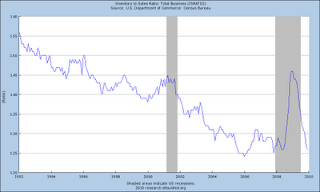I was looking through the avalanche of economic data today, and it struck me how once again Americans are spending well over their income growth.
I've written about this in the past in conceptual terms but never put it into an analysis. The true stealth stimulus plan in America is letting so many of its people live "rent free" as they sit in defaulted homes not making a mortgage payment. This "cost savings" allows them to shop and spend, and otherwise support the American consumption society.
From anecdotal stories (many of them) it is now taking at minimum 9-12 months to get evicted, and that's in states without super high foreclosure rates. I read the other day some Florida locations are 2+ years now. So 9, 12, 15, 18 months of not having to make a $1200, $1500, $1800 payment. And it can go longer now if you enroll in the trial modifications offered by government, then redefault. If you are really good at playing the system you might be able to go through two whole default cycles with the trial modification in the middle. 3 years of rent free living? Nirvana.
Further, with the new accounting rules that were the nexus of the market rally in March 2009, the banks no longer had to mark value of assets on their balance sheet to market... so they can now mark to what they see fit. Hence this system works for them too. All these foreclosures they should be closing on are things they are in no hurry to do... because doing so would mean they need to stop pretending about the true valuation of these defaulting mortgages and start admitting reality. Don't you love what 1 change in accounting rules can do for a country? ;)
My suspicion is the banks decide how much of a loss they want to take on home loans each quarter and then foreclose enough homes to make that quarter. (The easiest number for a bank to hit for the next several years!) The Feds are turning a blind eye as they are terrified of another drop in home prices and want to keep the banks 'solvent' All the mortgage modification programs give cover to the banks to delay foreclosures and regulate the supply of homes hitting the market.
How does that saying go??? Owe the bank $10,000 and they own you, owe the bank $50 million and you own the bank. In America we can do it better: Own a trillion in mortgages and you own the US Government.




